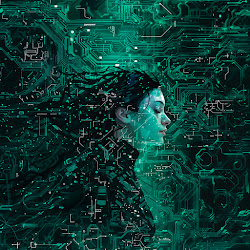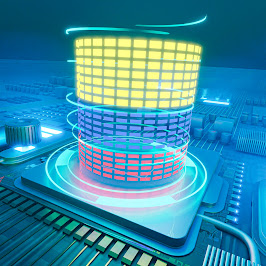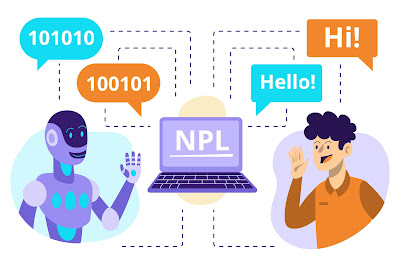Introduction:
Deep learning has become the cornerstone of modern artificial intelligence (AI), powering advancements in fields such as computer vision, natural language processing, autonomous vehicles, and healthcare. At the forefront of this revolution is NVIDIA, a company that has played an instrumental role in shaping the landscape of AI and deep learning through its cutting-edge hardware and software solutions. With its powerful GPUs (Graphics Processing Units) and a robust ecosystem of AI tools, NVIDIA enables researchers, businesses, and developers to leverage deep learning at unprecedented scales.

In this article, we delve into the world of NVIDIA deep learning, exploring
how the company’s innovations have accelerated the development of AI
applications, the role of its GPUs in deep learning, the software ecosystem it
offers, and how NVIDIA's solutions continue to push the boundaries of what's
possible in AI. We will also look at how businesses can optimize their use of
NVIDIA hardware and software to stay competitive in the rapidly evolving AI
landscape.
The Role of GPUs in Deep Learning:
Deep learning models, especially neural networks, require immense
computational power due to the complexity and scale of the tasks they perform.
These models involve millions (or even billions) of parameters, and training
them using traditional CPUs (Central Processing Units) is often prohibitively
slow. GPUs are useful in this situation.
GPUs, originally designed for rendering graphics in video games, excel at performing the types of parallel computations required by deep learning algorithms. Unlike CPUs, which are designed to handle a few tasks sequentially, GPUs can process thousands of tasks simultaneously, making them ideal for the matrix multiplications and data transformations that underpin deep learning.
NVIDIA has been a pioneer in transforming GPUs from gaming-centric devices into essential tools for AI. Through innovations such as CUDA (Compute Unified Device Architecture) and the development of specialized hardware like the Tensor Core, NVIDIA has optimized its GPUs to accelerate deep learning workloads.

Why GPUs Are Essential for Deep Learning:
Parallelism: GPUs can handle multiple operations at once, which is crucial
for training deep neural networks. Tasks such as matrix operations, convolution
operations, and backpropagation benefit from parallel processing.
Memory Bandwidth: Deep learning models require large amounts of data to be
processed simultaneously. GPUs provide high memory bandwidth, allowing them to
efficiently manage the large datasets used in deep learning.
Specialized Hardware: NVIDIA’s Tensor Cores, introduced in the Volta
architecture, are specifically designed to accelerate Tensor operations. These
operations are the backbone of neural network computations, and Tensor Cores
provide significant speedups for deep learning models compared to
general-purpose hardware.
Scalability: NVIDIA GPUs can be scaled across multiple machines, allowing
for distributed training of deep learning models. This scalability is essential
when working with large datasets and complex models that would take days or
weeks to train on a single machine.
NVIDIA's Deep Learning Hardware Ecosystem:
NVIDIA's dominance in the deep learning space isn't just due to its GPUs.
The company has built an entire ecosystem of hardware designed to accelerate AI
and deep learning applications. Here’s an overview of some of the key products
in this ecosystem:
1. NVIDIA Tesla and A100 GPUs:
NVIDIA's Tesla and A100 GPUs are the workhorses behind many of today’s AI
applications. These GPUs are designed specifically for data centers and
high-performance computing environments, offering unparalleled performance for
deep learning workloads.
The NVIDIA A100 Tensor Core GPU, in particular, is a game-changer for deep learning. Built on the Ampere architecture, the A100 features Multi-Instance GPU (MIG) technology, which allows a single GPU to be partitioned into multiple independent instances. This enables multiple users to share the same GPU resources, improving efficiency and utilization in data centers.
2. NVIDIA DGX Systems:
For businesses looking to implement AI at scale, NVIDIA offers the DGX family of systems. These systems are designed from the ground up to accelerate deep learning and machine learning workloads. DGX systems come pre-configured with NVIDIA GPUs, optimized software stacks, and the necessary infrastructure to handle the most demanding AI workloads.

The NVIDIA DGX A100 is a powerful all-in-one system that provides the
compute power needed for AI training, inference, and data analytics. With up to
8 A100 GPUs, the DGX A100 delivers unmatched performance, making it an ideal
solution for enterprises looking to stay ahead in the AI race.
3. NVIDIA Jetson:
NVIDIA provides the Jetson range of embedded systems for edge computing
applications. Jetson devices are
designed for AI at the edge, where low latency and power efficiency are
critical. These devices are used in a wide range of applications, including
autonomous drones, robots, and IoT devices.
The Jetson AGX Orin is one of the latest additions to the Jetson family, delivering up to 200 TOPS (Tera Operations Per Second) of AI performance in a compact form factor. This makes it ideal for deploying AI in edge environments where space and power are limited.
4. NVIDIA Clara:
In the healthcare space, NVIDIA offers Clara, a platform designed to
accelerate AI-driven healthcare and life sciences applications. Clara provides
the tools and infrastructure needed to build AI models for medical imaging,
genomics, and drug discovery.
Clara is built on NVIDIA GPUs and incorporates advanced AI techniques such as federated learning, which allows healthcare institutions to collaborate on AI models without sharing sensitive patient data.
NVIDIA's Deep Learning Software Ecosystem:
In addition to its hardware, NVIDIA provides a comprehensive software
ecosystem that makes it easier for developers and data scientists to build, train,
and deploy deep learning models. The following are some of this ecosystem's
essential elements:
1. CUDA:
At the heart of NVIDIA's deep learning software ecosystem is CUDA, a parallel computing platform and programming model that allows developers to harness the power of NVIDIA GPUs for general-purpose computing. CUDA provides libraries, compilers, and tools that simplify the development of GPU-accelerated applications.

For deep learning, CUDA is used to accelerate the training and inference of
neural networks, allowing models to be trained in a fraction of the time it
would take using a CPU.
2. cuDNN:
cuDNN (CUDA Deep Neural Network library) is a GPU-accelerated library that
provides highly optimized implementations of standard deep learning operations.
cuDNN is used by popular deep learning frameworks such as TensorFlow, PyTorch,
and MXNet to accelerate the performance of convolutional neural networks
(CNNs), recurrent neural networks (RNNs), and other deep learning
architectures.
3. TensorRT:
For optimizing deep learning models for inference, NVIDIA offers TensorRT,
a high-performance inference engine that provides optimizations such as
precision calibration, layer fusion, and kernel auto-tuning. TensorRT allows
developers to deploy deep learning models in production with minimal latency,
making it ideal for real-time applications such as autonomous driving, video
analytics, and speech recognition.
4. NVIDIA NGC:
The NVIDIA NGC is an extensive list of GPU-optimized applications for
high-performance computing (HPC), machine learning, and deep learning. NGC
provides pre-trained models, containers, and Helm charts that allow developers
to quickly get up and running with AI workflows. These resources are optimized
for NVIDIA GPUs, ensuring maximum performance and efficiency.
5. NVIDIA RAPIDS:
For data scientists working with large datasets, NVIDIA RAPIDS is a suite
of open-source libraries that accelerate data science workflows using GPUs.
RAPIDS provides GPU-accelerated implementations of popular data science
libraries such as Pandas, Scikit-learn, and XGBoost, allowing data preparation,
feature engineering, and model training to be done at lightning speeds.
Real-World Applications of NVIDIA Deep Learning:
NVIDIA's deep learning ecosystem has enabled breakthroughs across a wide
range of industries. Here are a few examples of how NVIDIA's solutions are
being used to solve real-world problems:
1. Autonomous Vehicles:
NVIDIA's GPUs and software are powering the development of autonomous
vehicles. Companies like Tesla, Waymo, and Uber are using NVIDIA's hardware to
train and deploy deep learning models that allow cars to navigate complex
environments, recognize objects, and make real-time decisions.
2. Healthcare:
In the healthcare industry, NVIDIA's Clara platform is being used to
develop AI models for medical imaging, drug discovery, and genomics. For
example, AI models trained on NVIDIA GPUs are being used to detect diseases
such as cancer and Alzheimer's from medical scans with greater accuracy than traditional
methods.
3. Natural Language Processing:
NVIDIA's GPUs are also being used to accelerate natural language processing
(NLP) models, such as GPT and BERT, which are used in applications like
chatbots, sentiment analysis, and language translation. These models require
immense computational power, and NVIDIA's hardware provides the performance
needed to train them efficiently.
.jpg)
Conclusion:
NVIDIA’s deep learning hardware and software ecosystem has revolutionized
the field of artificial intelligence, enabling breakthroughs in industries
ranging from healthcare to autonomous vehicles. With its high-performance GPUs,
specialized hardware like Tensor Cores, and a comprehensive software stack,
NVIDIA continues to push the boundaries of what's possible in AI.
As deep learning continues to advance, businesses and researchers can stay ahead of the curve by leveraging NVIDIA's cutting-edge solutions to accelerate their AI workflows. From training large-scale models to deploying AI at the edge, NVIDIA provides the tools and infrastructure needed to harness the full potential of deep learning.
In the years to come, as AI becomes increasingly integrated into every aspect of our lives, NVIDIA's role in driving innovation and performance in deep learning will be more critical than ever. Now is the time for businesses to invest in NVIDIA’s technology to stay competitive in the AI-powered future.








0 Comments